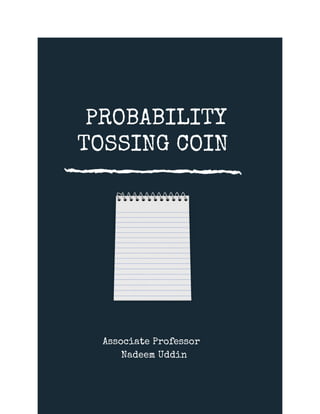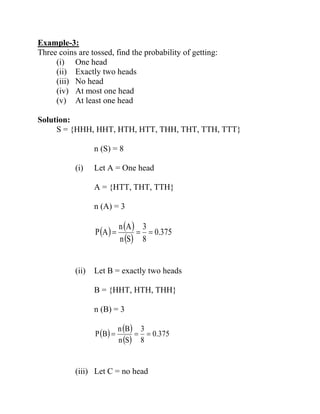Probability (tossing coin)
- 2. Example-3: Three coins are tossed, find the probability of getting: (i) One head (ii) Exactly two heads (iii) No head (iv) At most one head (v) At least one head Solution: S = {HHH, HHT, HTH, HTT, THH, THT, TTH, TTT} n (S) = 8 (i) Let A = One head A = {HTT, THT, TTH} n (A) = 3 (ii) Let B = exactly two heads B = {HHT, HTH, THH} n (B) = 3 (iii) Let C = no head ( ) ( ) ( ) 375.0 8 3 Sn An AP === ( ) ( ) ( ) 375.0 8 3 Sn Bn BP ===
- 3. C = {TTT} n (C) = 1 (iv) Let D = at most one head D = {HTT, THT, TTH, TTT} n (D) = 4 (v) Let E = at least one head E = {HHH, HHT, HTH, HTT, THH, THT, TTH} n (E) = 7 ( ) ( ) ( ) 125.0 8 1 Sn Cn CP === ( ) ( ) ( ) 5.0 8 4 Sn Dn DP === ( ) ( ) ( ) 875.0 8 7 Sn En EP ===



